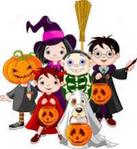
Happy Halloween to all you humans, ghouls, elves, werewolves, vampires, demons, gods and goddesses, and everyone, whoever and whatever you are. You all know the meaning of Halloween, right?
"Yay! We Get to wear costumes. Costumes. Candy. Parties. Ghosts and things that go bump in the night."
Okay, and you all know the origins of Halloween?
"Yay! Samhain. Harvest festival. Food. Singing, dancing, booze, and sexual rites."
Maybe, but there is a lot more to it.
SAMHAIN
The origins of Halloween began several thousand years ago with the Celts, who believed pagan gods controlled nature and were responsible for the four seasons, a belief held by many cultures throughout the world.
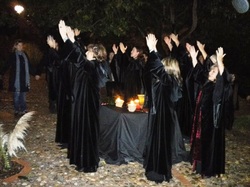
“This [Samhain] is the beginning of the Celtic and Wiccan New Year. Samhain is Irish-Gaelic for 'the Summer's end', and is pronounced 'sow-in'. Samhain represented the death of the summer sun god, Lugh.
Lugh's festival celebrates Nature's cycle of death and renewal, a time when the Celts acknowledged the beginning and ending of all things in life and nature. Samhain marked the end of harvest and the beginning of the New Celtic Year. The first month of the Celtic year was Samonios - ‘Seed Fall’.”
Chant for Samhain
A year of beauty. A year of plenty. A year of planting. A year of harvest.
A year of forests. A year of healing. A year of vision. A year of passion.
A year of rebirth. A year of rebirth. This year may we renew the earth.
Let it begin with each step we take. Let it begin with each change we make.
Let it begin with each chain we break. And let it begin every time we awake.
On Oidhche Shamha, the eve of Samhain, the villagers slaughtered cattle for the feast. They had a great bonfire and cast the bones of the slaughtered cattle into the flames. The Celts believed that this was a holy time when the boundaries between this world and the Otherword were broken and the dead could return to where they had lived. Part of the ceremony of Samhain was providing hospitality for the dead ancestors.
The earliest written record we have of Samhain comes from the Coligny Calendar, a Celtic lunar calendar inscribed on bronze tablets and discovered in eastern France about a hundred years ago. These tablets have been dated at first century BC. The language is "Gaulish", implying that this predates the Roman influences.
You knew that, right?
When the Romans conquered the Celtic territories around 43 AD, they brought their own festivals and traditions with them, and several of those merged with the celebration of Samhain. Anyone interested can find information on the Internet, but be prepared for conflicting information.
FERALIA
The Roman festival Feralia, commemorating deceased ancestors, is one that went with the Romans on their missions of conquest. According to some sources, Feralia occurred in late October, meshing well with Samhain.
Well, maybe. The writings of Ovid, the famous Roman poet (Publius Ovidius Naso, born 43 bce – died 17 ce) describes the Roman year and its religious festivals his work Fasti.
There, he indicates that Feralia was the last day of the Roman festival Parentalia, a nine-day event from February 13 through 21 (Julian calendar). On February 21, Roman citizens—and remember, everyone the Romans conquered had the choice of becoming a Roman citizen as long as the individual complied with Roman law—brought offerings to the tombs of their dead ancestors to honor them. Those offerings consisted of wreaths, a sprinkling of grain, salt, bread soaked in wine, and violets.
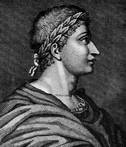
And by the way, the word naso in Italian means nose (nose is nasus in Latin). That was Ovid's real name and, if the drawings of Ovid are anywhere near accurate, it was prophetic.
POMONA (POMORUM)
Pomona was the Roman goddess of fruit trees, gardens, and orchards and, according to some sources, the goddess of orchards and the harvest. There is a difference of opinion when the festival honoring Pomona (a celebration shared with her husband Ventumnus, the god of the turning year or seasons) was celebrated. Various sources cite August 13, August 23, and November 1.
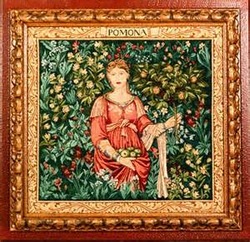
LEMURIA (LEMURALIA)
A third Roman festival that influenced Samhain was Lemuria. As part of this ancient feast (celebrated May 9, 11, and 13 - Julian calendar), the Romans exorcised malevolent ghosts of the dead (evil spirits or lemures) from their homes. The ritual, again according to Ovid, involved the head of the household walking barefoot around house at midnight, throwing black beans over his shoulder (nine of them to be exact) and chanting, while the rest of the family clashed bronze pots. Sounds like a good Halloween party game.
For most of my life, I believed this to be the origin of Halloween. So wrong! Well, no one taught me anything different.
The Roman Catholics, like many faiths, honor the dead with their own festivals. All Saints Day honors the lives of saints and martyrs and became a day of obligation in the ninth century. Later, Pope Gregory IV confirmed celebration of All Saints Day on November 1 and All Souls Day on November 2, coinciding with the festival of Samhain.
Because the festival of All Saints was sometimes known as "All Hallows," or "Hallowmas," and because October 31 was the eve before All Hallows, the celebration on night before All Hallows became known as All Hallows Eve and eventually Halloween.
HAPPY HALLOWEEN
We’ve come full circle. Happy Halloween, whatever it means to you, and however you celebrate it. Just watch out for flying black beans and harvest "moons".
http://www.chalicecentre.net/samhain.htm
http://allsaintsbrookline.org/celtic/samhain.html
http://ancienthistory.about.com/cs/celtsmyth/a/lochalloween.htm
http://www.imbas.org/articles/samhain.html
http://www.religioustolerance.org/hallo_sa.htm
http://www.new-age.co.uk/celtic-festivals-samhain.htm
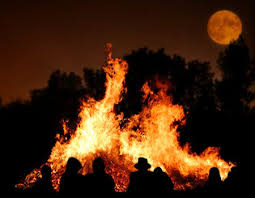

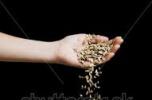



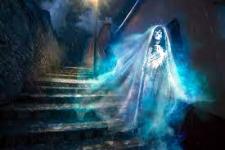

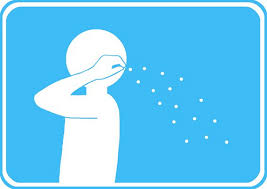
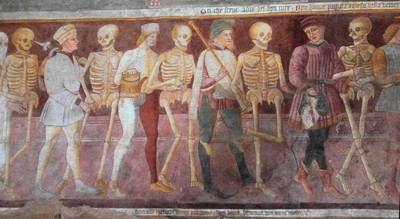

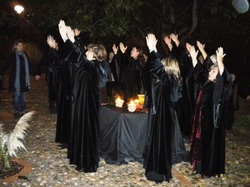
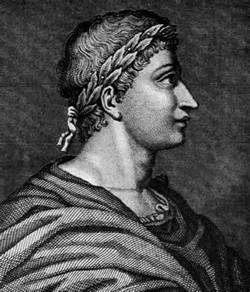
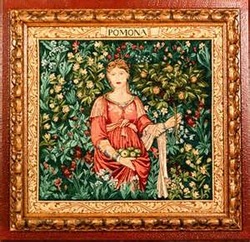
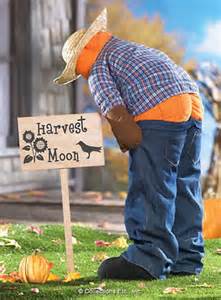
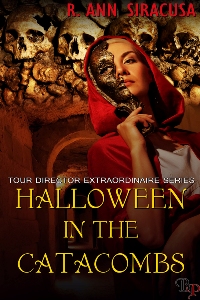
 RSS Feed
RSS Feed